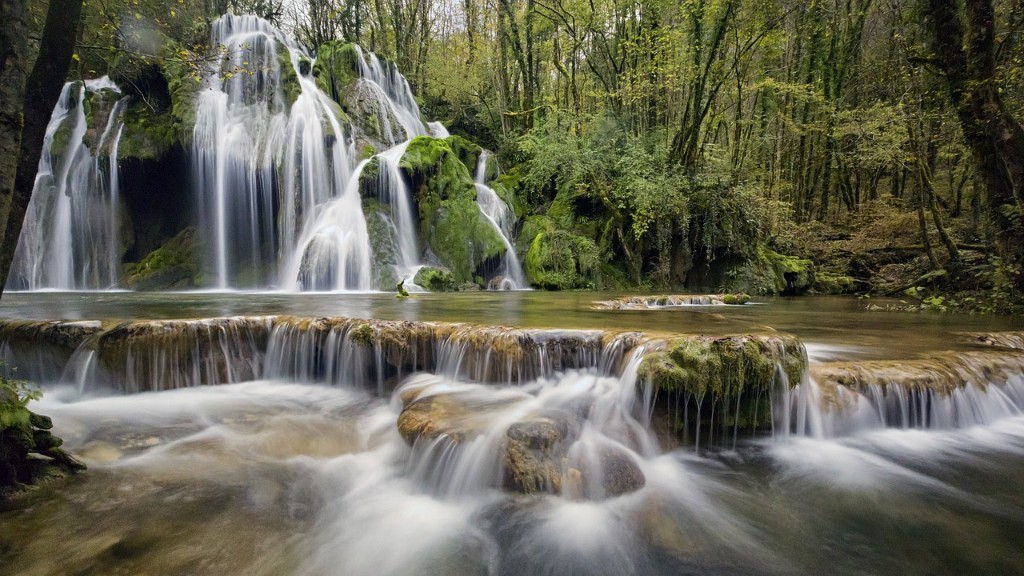Dams on the Nile River
The Nile River is one of the world’s longest rivers and an essential source of life for many countries. For centuries, it has provided communities in the area with water for drinking, irrigation, and electricity. As climate change, population growth, and economic development put more strain on the river’s resources, governments are forced to take more measures to conserve the river and its resources.
One of the most commonly used measures is the building of dams. Since the 1950s, countries in the region have been building dams to regulate the flow of the river and store water for irrigation and other uses. However, dams can have a devastating impact on the river’s fragile ecosystem and the people and animals who depend on it for their livelihoods.
The most prominent dam on the Nile is the Aswan High Dam in Egypt. This large hydro-electric dam was built in the 1960s and is now responsible for generating most of the electricity used in the country. It has also helped curb the devastating annual floods the region experienced previously. However, the dam has had a significant impact on the river’s water levels and can cause serious disruption to fish migration and other aquatic life.
Other countries, such as Ethiopia and Sudan, are also building dams on the Nile River. Ethiopia’s Grand Ethiopian Renaissance Dam is intended to be the largest hydro-electric dam in Africa, with the potential to provide power to millions of people. Like the Aswan dam, the dam has already caused controversy over water rights, with disagreements between Ethiopia and other downstream nations.
The debate over the role of dams on the Nile is a contentious one, with environmentalists warning of the dire consequences of further dam construction. They argue that building more dams will lead to increased pollution, reduced fish populations, and further stress on local ecosystems, as well as tensions between countries over water access. On the other hand, supporters point to the potential benefits of dams, such as increased electricity and irrigation for millions of people who depend on the river and its resources.
As the debate continues and global demand for water and electricity continues to increase, governments in the region must consider carefully how best to manage the Nile’s resources. The long-term survival of this iconic river, and all of the life that depends on it, hangs in the balance.
Effects of Dams on Local Ecosystems
A key concern with dams constructed on rivers is the disruption they can cause to local ecosystems. While dams can provide a range of benefits, such as generating electricity and allowing for flood control, they can also have serious consequences downstream. When a dam is built, it alters the flow of the river and can cause the water to become shallower, slower moving, and warmer than it was before.
This can have a negative effect on fish migration, since fish are adapted to specific river conditions. In the case of the Nile, certain species of fish, such as the endangered Egyptian Perch, rely on the river’s seasonal flow for successful migratory patterns. Dams can also reduce the amount of sediment in the river, leading to reduced nutrient levels, which in turn can lead to less fertile soils downstream.
In addition to changing the river’s physical habitat, dams can also disrupt natural river processes such as the deposit and removal of sediment from the river bed. Without adequate sediment, the riverbanks can become subject to erosion, which in turn can affect the habitat of fish, birds, and other animals who rely on the river’s banks for spawning grounds. Finally, dams can disrupt the natural flood cycles, which are essential to replenishing the surrounding ecosystems.
It is clear that dams can have important environmental impacts on the Nile River and its surrounding ecosystems. It is therefore important for governments in the region to take into account the potential long-term consequences of dam construction, in order to ensure that the river is able to continue to provide for both present and future generations.
Alternatives to Dam Building
Building more dams is not the only solution to managing the resources of the Nile River. There are a range of alternative measures that can be taken to ensure the long-term health of the river, its ecosystems, and the people who depend on it. One key alternative approach is water conservation, which includes measures such as improving water efficiency in irrigation, reducing water losses due to leakage, and increasing public awareness of water conservation.
In addition, governments in the region must work together to develop better methods of sharing the Nile’s resources. This could include establishing agreements between countries on how to share and manage the Nile’s resources, as well as developing mechanisms for resolving disputes between downstream and upstream nations. A fundamental step would be for governments to work together in the development of a comprehensive water management plan for the entire region.
Finally, investing in renewable energy sources such as solar and wind could help reduce the need for dams and other water-intensive forms of electricity production. Renewable energy sources are often cheaper and can produce energy without the need to dam rivers or use other water-intensive methods. In addition, renewable energy sources can help reduce carbon emissions and are often more acceptable to local communities.
In conclusion, building more dams on the Nile River should not be the only solution to managing the river’s resources. The region’s governments should instead seek to explore more sustainable alternatives such as water conservation, sharing agreements, and renewable energy.
Impacts on Local Communities
The impacts of dams on the Nile River reach far beyond the physical environment. Local communities who rely on the river and its resources are particularly affected by dam construction. For example, many communities in Egypt depend on the river for their livelihoods, including fishermen who depend on fish migration patterns, farmers who depend on the river for irrigation, and those who rely on the river for drinking water and other resources.
As the river’s water levels and flow become regulated by dams, fish populations are reduced, fertile soils become less productive, and water access is curbed. This can have devastating impacts on local communities, particularly those who are impoverished and have fewer resources to draw on. It can also lead to tensions between countries, as downstream nations can suffer from a lack of water due to upstream dams.
Local communities in the region should therefore be involved in any plans for further dam construction, so that their needs and concerns can be taken into account. The views of local communities should be included in the wider debate over dam construction, and their rights to access and use the river’s resources must not be overlooked.
Ultimately, the future of the Nile and the lives of the people and animals who depend on it depends on the decisions made today. The region’s governments must collaborate in order to ensure that the river’s resources are managed sustainably and equitably, so that the Nile River can continue to be an essential source of life for generations to come.
International Cooperation
The debate over the construction of dams on the Nile is a global one, with countries in the region and beyond taking sides in the debate. Many have expressed their concerns about the impact of dams on the river’s fragile ecosystems and the people who rely on them for their livelihoods. At the same time, others have argued for the potential benefits that dams can bring to the region, such as improved electricity and irrigation.
This has led to a range of efforts from international organisations such as the United Nations to facilitate cooperation between countries in the region. For example, the UN’s Sustainable Development Goal 6 encourages countries to work together to develop and manage water resources sustainably. Other initiatives, such as the Nile Basin Initiative, have also been established with the aim of promoting cooperation between countries in the region.
It is clear that international cooperation and dialogue is essential to discussing the future of the Nile River. The nations of the region must work together to ensure that the river’s resources are managed in a sustainable and equitable way, with the needs of all countries and communities taken into account.
Legal Frameworks
In addition to cooperation between nations, legal frameworks are also essential to ensure that the Nile’s resources are managed sustainably and equitably. International laws, such as the Convention for the Protection and Development of the Nile Basin, provide the framework for collaboration between countries in the region. This can include sharing information, developing joint plans for the river’s management, and resolving disputes.
At the same time, domestic legal frameworks can provide protections for the local communities who rely on the river and its resources. This can include laws protecting water access rights and regulating the construction of dams. Such laws can help protect local communities and ensure that their rights are not overlooked or ignored.
In conclusion, legal frameworks are essential for ensuring that the Nile’s resources are managed sustainably and equitably for all countries and communities in the region. National and international laws must therefore be put in place to protect the rights of those who depend on the river for their livelihoods and provide a framework for collaboration and cooperation.





